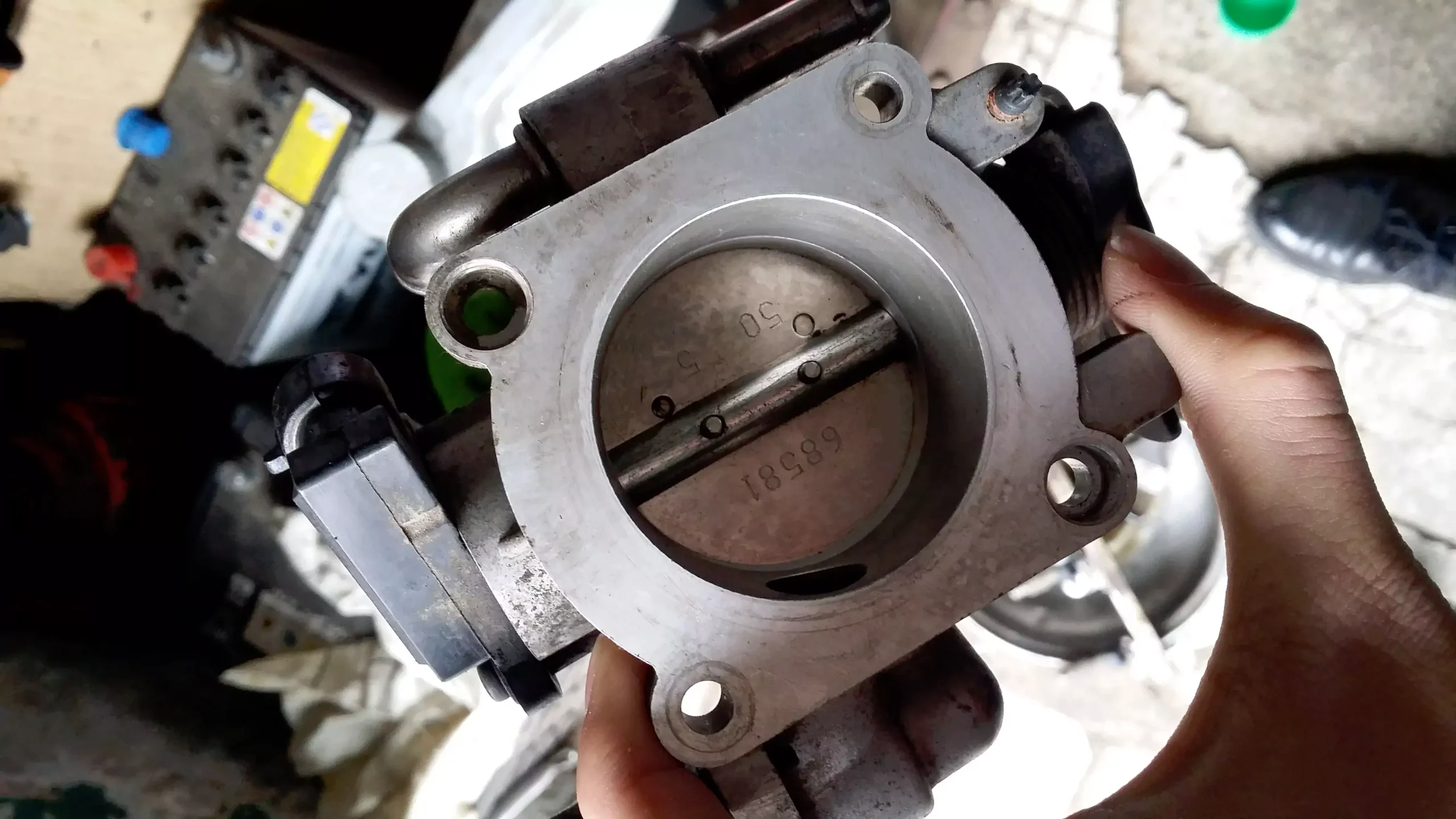Does your car feel underpowered whenever you press the gas? Is it consuming too much fuel? It could be due to carbon build up on throttle body of your car.
And how do you resolve this issue? You can either clean the carbon deposits or replace the throttle body. But let’s hope it doesn’t come to that.
Once you’ve read this blog post, you’ll know how to prevent carbon from building up on your car’s throttle body, what causes it, its symptoms, and solutions to get rid of it.
So, without further ado, let’s get started!
What is Carbon Build-Up on the Throttle Body? How Does it Affect Your Engine’s Health?
Much like a butterfly valve, the throttle body lets the air into the combustion chamber of your car’s engine. Your car can have one or more throttle bodies depending upon its need.
Things can go wrong for a throttle body due to incomplete combustion of fuel. Incomplete combustion may lead to the formation of carbon deposits on the throttle body.
This issue is more dominant in cars with direct fuel injection, so we recommend cleaning the throttle body of older cars every 20,000 miles.
Why this is important?
Because carbon buildup adversely affects the performance and health of your engine.
From reduced power to rough idling and increased fuel consumption, all these are the woes of carbon deposits on the throttle body.
Always watch out for these symptoms and take immediate action to save hundreds of dollars on throttle body replacement.

6 Reasons Behind Carbon Build-up on Throttle Body
As I mentioned, incomplete combustion is the root of carbon built on the throttle body.
But it is just a consequence of deeper reasons such as low-quality fuel, failure of the EGR system, poor cleaning operation, delayed maintenance, and aggressive driving.
Let’s look at the deeper causes of carbon build-up on the throttle body.
(1) Incomplete Combustion
All the carbon deposits are a byproduct of incomplete combustion.
When the air-fuel mixture isn’t burned correctly, the residue is left clinging to the intake valve. Over time, these residual particles accumulate to form carbon buildup.
(2) Using Low-Quality Fuel
Low-quality fuels contain environmental pollutants and asphaltenes, which means one thing for your engine: carbon deposits.
Using low-quality fuels is the leading cause of incomplete combustion in ICE engines, causing carbon deposit formation.
(3) Failing EGR Valve
The exhaust gas recirculation (EGR) valve is responsible for redirecting a portion of exhaust gases back into the combustion chamber.
Why?
This dilutes the AF mixture, reduces the combustion temperature, and cuts down on NOx emission.
Now, when your car has a failing EGR valve, it can introduce contaminants with the exhaust gases into the intake manifold. This leads to carbon deposits.
(4) Poor Cleaning of Throttle Body
When the throttle body is removed, a matching operation must be performed while reassembly.
If your mechanic isn’t skilled enough to do this, it may create an imbalance affecting the throttle body performance. This causes mixing of contaminants with incoming air.
(5) Maintenance Delays
Don’t delay scheduled maintenance at any cost.
Untimely oil, oil filter, and air filter changes are the leading causes of many types of build-up in your engine, including the throttle body deposits.
(6) Aggressive Driving Style
Aggressive driving in stop-and-go traffic intermittently forces the throttle body to open and close.
This fatigue may cause the throttle body to go bad sooner than expected. If the throttle body isn’t doing its job properly, it means carbon deposits for your engine.
6 Symptoms of Carbon Build-up on Your Throttle Body
You might notice higher fuel consumption, engine hesitation, shakings, misfires, and black exhaust smoke due to carbon deposit formation on the throttle body.
Watch out for the following common symptoms of carbon build-up on your throttle body.

(1) Check Engine Light
Close to 60 issues can cause the check engine light to pop up on your dashboard. Deposits on the throttle body is one of many such issues.
But CEL can mean many different things, so always look out for other symptoms in combination with it. Things might make sense this way!
(2) Increased Fuel Consumption
Increased fuel consumption clearly indicates something is wrong with your engine.
In case of a bad throttle body, carbon buildup doesn’t let the intake valve close all the way down. Hence, fuel keeps getting sucked in, leading to increased fuel consumption.
(3) Reduced Engine Power
Too much fuel should mean too much power, right?
Wrong.
When the air-fuel mixture ratio is disturbed, the engine performance is affected, resulting in hesitation while accelerating.
Next time, be mindful of a bad throttle body when you floor the gas pedal, and there’s no response from your car whatsoever.
(4) Engine Shaking Badly
An imbalance in the air-fuel mixture ratio leads to rough idling. This could also mean that your engine will be shaking pretty badly. Watch out for a faulty throttle body when you experience this.
(5) Engine Misfires
Every engine follows a certain firing sequence. It stays in order when there is a proper supply of air-fuel mixture. That is no longer true once the throttle body is laced with carbon deposits.
Thus, engine misfires are a clear sign that something is wrong with the intake system.
(6) Black Exhaust Smoke
Another sure sign of a faulty throttle body is black smoke exhaust smoke from your muffler.
You might say that smoke is black any ways.
Wrong again. Smoke from modern-day cars is pretty clear, so you should know something is up when you see black smoke coming out of your vehicle.
Best Solution to Get Rid of Carbon Build-up on Throttle Body
There are two methods to get rid of carbon buildup on the throttle body. One is to remove and clean the throttle body, while the other uses cleaners on a fixed throttle body.
Chemical cleaning is the most efficient way to remove carbon deposits on the throttle body. You can try to spray or inject a carbon removal solution into the intake manifold and turn on the engine.
This way, the carbon deposits are flushed out. You can do it if you have caught the issue early on.
For advanced carbon build-up, I recommend taking your vehicle to a mechanic’s shop.
Here, they will remove the entire intake system, disassemble the throttle body, and soak it in a cleaning solution. An expert mechanic will advise on replacing worn-out parts, reassembling the intake system, and fixing it back into your engine.

How to Prevent Carbon from Building Up on Throttle Body?
I’ve consulted with top mechanics to learn how to prevent carbon deposits on the throttle body. All expert mechanics have one simple advice: Maintain your vehicle well.
If you properly maintain your vehicle, use high-quality fuel, drive regularly, and avoid aggressive driving, you should steer clear of carbon build-ups.
Here’s what you should do to prevent carbon from building up on the throttle body:
- Take your car in regularly for scheduled maintenance.
- Timely oil changes can go a long way in preventing carbon deposits.
- Always use high-quality fuel in your car.
- Owners of old cars should consider using fuel additives such as octane boosters.
- It’s your daily-use car, not the F1 racer. So, don’t push aggressive driving beyond the limit.
- I recommend driving your car at least once a week to avoid any carbon deposits.
Final Word; 5 Reasons for Carbon Build-up on Throttle Body
Carbon build up on the throttle body is caused by incomplete combustion, failing EGR system, use of low-quality fuel, poor maintenance, and aggressive driving.
Carbon build-ups can harm your engine by reducing power and turning it into a gas guzzler.
To avoid such issues, you must maintain your vehicle well and remove the initial carbon deposits on throttle body before they become a headache.
I hope you found the advice based on my personal experiences helpful. I’ve tried to answer all your questions about carbon build-up on throttle body.
If there are any more questions, leave them in the comment section below, and I’ll try to respond to each and every one of them.
For more advice on car maintenance, please explore our blog.


